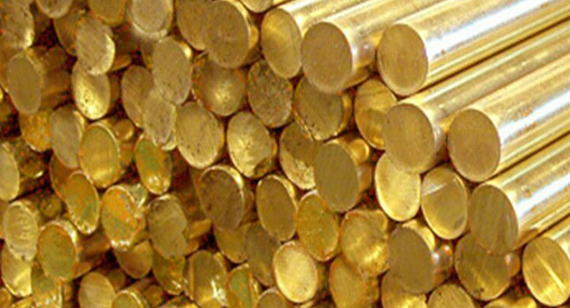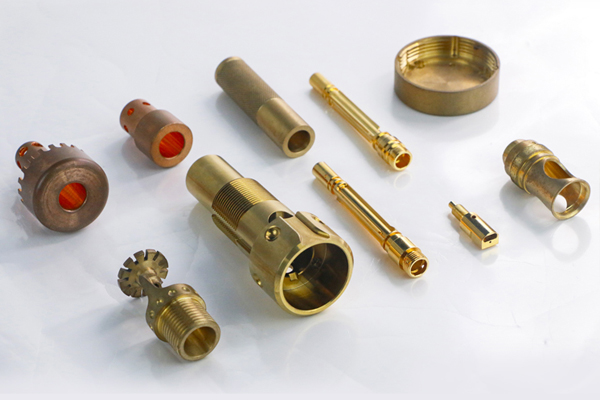15 years one-stop China custom CNC machining parts factory

Hey there I’m VMT Sam!
With 25 years of CNC machining experience we are committed to helping clients overcome 10000 complex part-processing challenges all to contribute to a better life through intelligent manufacturing. Contact us now
 250 |
Published by VMT at May 14 2024
250 |
Published by VMT at May 14 2024
Brass and bronze, common metal materials in the field of CNC machining, each have their own characteristics. This article will provide a comprehensive and detailed comparison of brass and bronze, analyzing their differences in material properties, conductivity, strength, formability, appearance and texture, pricing, and applications. The aim is to assist readers in making the correct choice during the manufacturing process of CNC machined parts. Additionally, this article will introduce the advantages of VMT CNC machining factory in manufacturing brass and bronze CNC machined parts, along with addressing frequently asked questions, providing practical references for readers.
Overview of Brass
Brass is an alloy composed of copper and zinc, with zinc content typically ranging from 5% to 45%. Depending on the added elements, brass can be classified into common brass and special brass. Common brass exhibits good machinability and corrosion resistance, while special brass possesses higher strength and wear resistance. Brass has a yellowish color, making it widely used in decoration and construction industries.

Overview of Bronze
Bronze is a copper-tin alloy, with tin content ranging from 3% to 20%. Bronze features a low melting point, high hardness, strong ductility, wear resistance, and corrosion resistance. Its color is bright, and after oxidation, it exhibits a greenish hue. In ancient times, bronze was widely used in the manufacturing of ceremonial vessels and weapons, while in modern times, it is more commonly used in the production of bearings, gears, and mechanical parts requiring high corrosion resistance.
Detailed Comparison of Brass and Bronze
Differences in Material Properties:
Brass possesses good machinability and corrosion resistance, while bronze exhibits higher hardness and wear resistance. Additionally, bronze has a lower melting point than brass, giving it an advantage in processes requiring rapid cooling.
Conductivity Differences:
Brass has higher conductivity compared to bronze, attributed to the addition of zinc, which enhances copper's conductivity. However, under certain circumstances, bronze can also meet conductivity requirements.
Strength Differences:
Bronze surpasses brass in both hardness and strength, making it more advantageous in environments with heavy loads and high wear. Nevertheless, brass performs well in applications with lower strength requirements, and its machining costs are relatively lower.
Formability:
Brass has good plasticity and ductility, making it easy to process into various shapes. On the other hand, bronze presents challenges in machining due to its higher hardness and brittleness.
Appearance and Texture:
Brass exhibits a distinct yellow color and a softer texture, while bronze displays a greenish hue and a harder texture. These differences contribute to the unique charm of brass and bronze in the fields of decoration and art.
Pricing and Options:
The prices of brass and bronze vary depending on market demand, manufacturing processes, and quality. Generally, bronze commands a higher price than brass due to its higher manufacturing costs and material expenses. Therefore, the selection should consider budget and performance requirements.
Applications of Brass and Bronze
Brass finds extensive applications in valves, water pipes, air conditioning connections, radiators, etc., due to its good machinability and corrosion resistance. Bronze, with its high strength and wear resistance, is more suitable for manufacturing bearings, gears, mechanical parts, and tools requiring high corrosion resistance.

Advantages of Brass and Bronze
Brass offers good machinability, corrosion resistance, and conductivity, suitable for various applications. Meanwhile, bronze is renowned for its high strength, wear resistance, and aesthetic appeal, particularly in environments with heavy loads and high abrasion.
How to Choose Between Brass and Bronze?
When choosing between brass and bronze, factors such as material properties, conductivity, strength, formability, appearance and texture, pricing, and applications should be comprehensively considered. Specifically, the selection process may involve:
Choosing the appropriate material based on the usage environment and performance requirements.
Considering machining costs and production efficiency.
Referring to market prices and supply conditions.
Taking personal preferences and aesthetic requirements into account.
Manufacturing Metal Parts and Prototypes at VMT
VMT CNC machining factory boasts rich experience in brass and bronze CNC machining, providing customers with high-quality brass and bronze CNC machined parts. We utilize advanced CNC machining equipment and technology to ensure the precision and performance of parts meet customer requirements. Additionally, we offer comprehensive CNC machining services, including part design, machining, and inspection, facilitating rapid and efficient production for customers.

FAQ on Brass and Bronze CNC Machined Parts
What is the difficulty level of machining brass and bronze?
Answer: Brass machining is relatively easy, as it is conducive to cutting and shaping. In contrast, bronze machining is more challenging due to its higher hardness.
How to choose the suitable brass or bronze material?
Answer: When selecting brass or bronze materials, factors such as usage environment, performance requirements, machining costs, and personal preferences should be considered.
Is there a significant price difference between brass and bronze?
Answer: The prices of brass and bronze vary depending on market demand and quality factors. Generally, bronze is priced slightly higher than brass.
Conclusion
Brass and bronze, as common metal materials in the CNC machining field, possess distinct characteristics. When making choices, considerations should be tailored to specific application scenarios and requirements. With rich experience and advanced technology, VMT CNC machining factory can provide customers with high-quality brass and bronze CNC machined parts and CNC machining services. Through the introduction and answers in this article, readers are expected to gain a deeper understanding of brass and bronze, enabling them to make informed decisions in practical applications.
Ready To Start Your Next Project?
Get Instant Quote

Request a Free Quote
Send us a message if you have any questions or request a quote. We will get back to you ASAP!